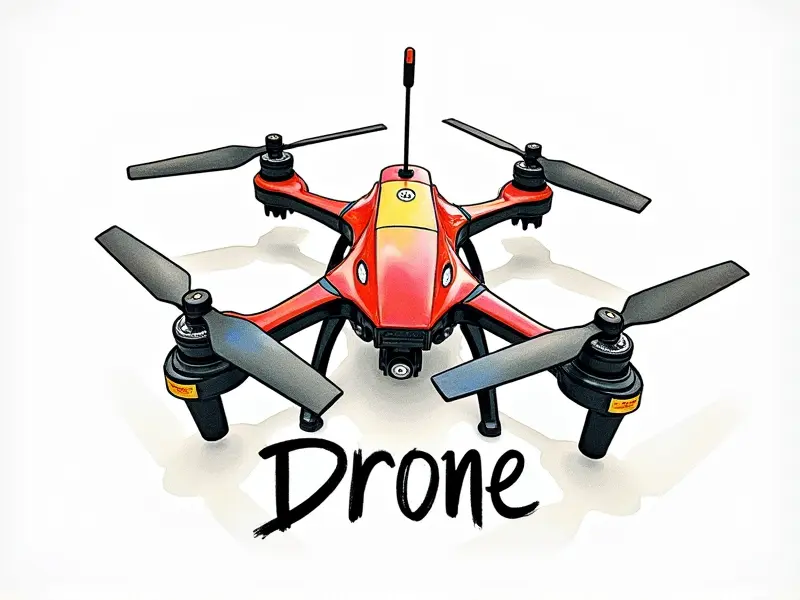Fixing common drone issues?

Top 5 Drone Maintenance Tips
Maintaining your drone is essential for ensuring optimal performance and safety during flights. Here are five key maintenance tips every drone owner should follow:
- Regular Cleaning: Dust, dirt, and debris can accumulate on the propellers, motors, and camera lens over time, affecting their functionality.
- Battery Care: Proper battery management is crucial. Store batteries in a cool place away from direct sunlight, and avoid charging them to 100% capacity every time.
- Motor Lubrication: Apply a small amount of lithium grease or similar lubricant to the motor shafts to reduce friction and extend their lifespan.
- Propeller Balance: Ensure that all propellers are balanced and installed correctly. Uneven weight distribution can lead to poor flight performance and increased wear on motors.
- Firmware Updates: Keep your drone's firmware up-to-date with the latest patches and improvements from the manufacturer.
Troubleshoot Common Drone Problems
Drones are complex machines that can encounter a range of issues. Here’s how to address some of the most frequent problems:
Solve Battery Drain on Drones
- Check for Parasitic Drains: Ensure that unnecessary components like GPS, FPV transmitters, or other accessories are turned off when not in use.
- Maintain Optimal Operating Temperature: Extreme temperatures can impact battery performance. Store and charge batteries at room temperature (around 20-25°C).
- Monitor Battery Health: Use a multimeter to check the voltage of each cell in your battery pack. Uneven voltages indicate worn-out cells that need replacement.
Prevent Signal Interference Issues
- Select Clear Flight Zones: Avoid flying near sources of electromagnetic interference such as Wi-Fi routers, cellular towers, and other electronic devices.
- Use Quality Components: Invest in high-quality antennas and transmitters designed to minimize signal loss over distance.
- Check for Physical Obstructions: Ensure that there are no physical barriers like trees or buildings blocking the line-of-sight between your drone and remote control.
Repair Propeller Damage Quickly
- Spare Parts Stockpile: Always have spare propellers on hand, as they can break easily during operation.
- Use the Correct Tools: Utilize specialized tools like propeller removal kits to safely and efficiently change damaged blades.
- Inspect for Cracks: Regularly examine propellers for small cracks or damage that could compromise their integrity during flight.
Fix Wobbly Flight in Drones
- Balance the Propellers: Use a propeller balancer tool to ensure all blades are perfectly balanced before installation.
- Check for Loose Screws: Tighten any loose screws or nuts on the frame and motors that might be causing vibrations.
- Adjust PID Settings: Fine-tune your drone’s pitch, roll, and yaw settings to achieve smoother flight characteristics.
Solve Camera Jitter in FPV
- Stabilize the Gimbal: Ensure that the camera gimbal is securely mounted and properly balanced to reduce unwanted movement.
- Adjust Image Stabilization Settings: Enable image stabilization features on your drone’s camera if available, or use third-party apps designed for FPV cameras.
- Improve Power Supply: Use a dedicated power supply line for the camera to prevent voltage drops affecting video quality during high-demand operations.
Why is My Drone Shaking?
Your drone may shake due to several reasons, including:
- Battery Condition: Weak batteries can cause instability and shaking in flight. Replace old or damaged batteries immediately.
- Mechanical Issues: Loose screws, worn-out bearings, or misaligned components can introduce unwanted vibrations.
- Software Glitches: Firmware bugs or incorrect parameter settings can cause erratic behavior during operation.
How to Calibrate a Drifting Drone
- Reset Gyroscopes and Accelerometers: Follow the manufacturer’s instructions for recalibrating these sensors if they become inaccurate over time.
- Adjust PID Values: Tweaking the proportional-integral-derivative (PID) settings can help correct drift issues, but proceed with caution as incorrect adjustments may worsen problems.
- Update Firmware and Software: Sometimes a simple firmware update resolves calibration issues by fixing underlying bugs or introducing improved algorithms.
Was this article useful? 👍 0 👎 0 👀 0 Rating:
Posted by:
Add new comment/question

